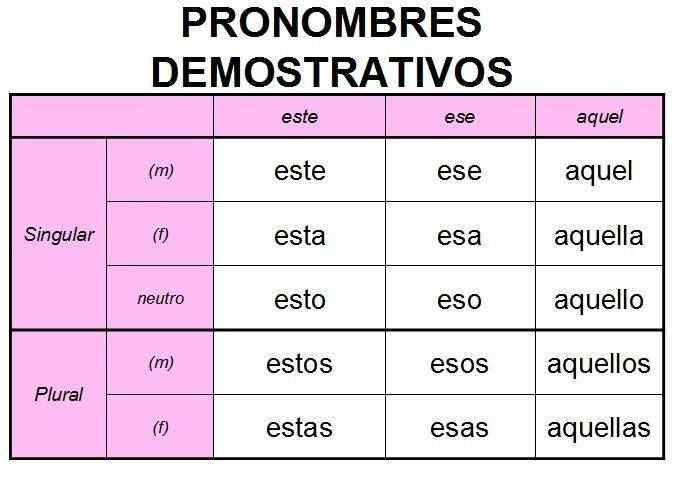Picture this: You’re in a bustling Spanish market, surrounded by vibrant colors and tempting aromas. Suddenly, you spot a beautiful, ripe mango. You want to ask the vendor, “Where is the mango?” But hold on! In Spanish, that simple question has a hidden twist: “Where is the mango?” The key to getting it right lies in understanding the fascinating world of Spanish genders, and specifically, the difference between “esta” and “este.” This seemingly simple grammatical concept can feel like a tangled vine, but don’t worry! This article will unravel the mystery and empower you to navigate the Spanish language with confidence.

Image: www.pinterest.co.uk
The core of Spanish grammar is built upon the concept of gender. Every noun in Spanish is gendered, either masculine or feminine. This might seem strange to English speakers, but it opens a world of grammatical richness. “Esta” and “este” are the feminine and masculine forms, respectively, of the demonstrative adjective “this” – the word we use to point out something close by. Knowing which one to use is like knowing the right key to unlock a specific door. Understanding this fundamental concept is key to speaking and writing correct Spanish.
Deciphering the Feminine and Masculine Mystery
So how do you tell if a word is masculine or feminine? It’s not always obvious! The rules can feel complicated, but the good news is there are some common patterns to follow. Many words end in -a are feminine (like “la casa,” the house), while those ending in -o tend to be masculine (like “el libro,” the book). Of course, there are exceptions, but these are good starting points.
But what about “esta” and “este”? How do you know which one to use? The key lies in the noun being described. If the noun is feminine, you use “esta” (like “esta manzana,” this apple). If the noun is masculine, you use “este” (like “este café,” this coffee). It’s like a dance, where the adjective takes its cue from the noun it’s describing!
Unmasking the Gender Reveal
To further illuminate this, let’s break down the “esta vs este” dilemma through relatable examples:
-
“Esta” is for the ladies: Imagine you’re looking at a vibrant, red rose. You want to say “This rose is beautiful.” You would use “esta” because “rosa” (rose) is a feminine noun. So the correct phrase becomes, “Esta rosa es hermosa.”
-
“Este” stands by the gents: Now imagine you’re holding a sturdy, antique book. You want to say, “This book is old.” In this case, “libro” (book) is a masculine noun. Therefore, you would say, “Este libro es viejo.”
The Unseen Clue: Understanding Articles
The articles “el” and “la” – which mean “the” – are also crucial in understanding gender. These articles are the tip of the iceberg, revealing whether a noun is masculine or feminine. “El” is used with masculine nouns, while “la” is used with feminine nouns. This rule is closely linked to the use of “este” and “esta.”
- Let’s take our mango example from earlier. You want to say, “Where is the mango?” You know “mango” is masculine because we use “el” (the) before it. This means we need to use “este.” The correct phrase becomes, “Where is este mango?”

Image: www.learnspanishnow.online
A World Beyond the Basics
Mastering “esta” and “este” isn’t just about learning Spanish grammar; it’s about delving into a culture that embraces the beauty of detail. This subtle dance between gender and adjectives is part of what makes Spanish so rich and expressive.
Mastering the “Esta vs Este” Tango: Practical Tips
-
Learn those endings: Pay close attention to the last letter of the noun. Many masculine words end in “-o,” while feminine words end in “-a.”
-
Think in pairs: Remember, “este” and “el” go together, just like “esta” and “la.”
-
Immerse yourself: The best way to learn is to practice! Read Spanish texts, watch Spanish films, and even chat with Spanish speakers online!
Esta Vs Este In Spanish
Final Thoughts: Unlocking the Power of “Esta vs Este”
Understanding the distinction between “esta” and “este” gives you the key to unlocking a deeper understanding of the Spanish language. It’s not just about grammar; it’s about appreciating the intricate nuances that make Spanish so vibrant and captivating. So, next time you’re in a Spanish-speaking environment and you need to point out something close by, remember this: “Esta” for the ladies, and “este” for the gents. Happy Spanish learning!





